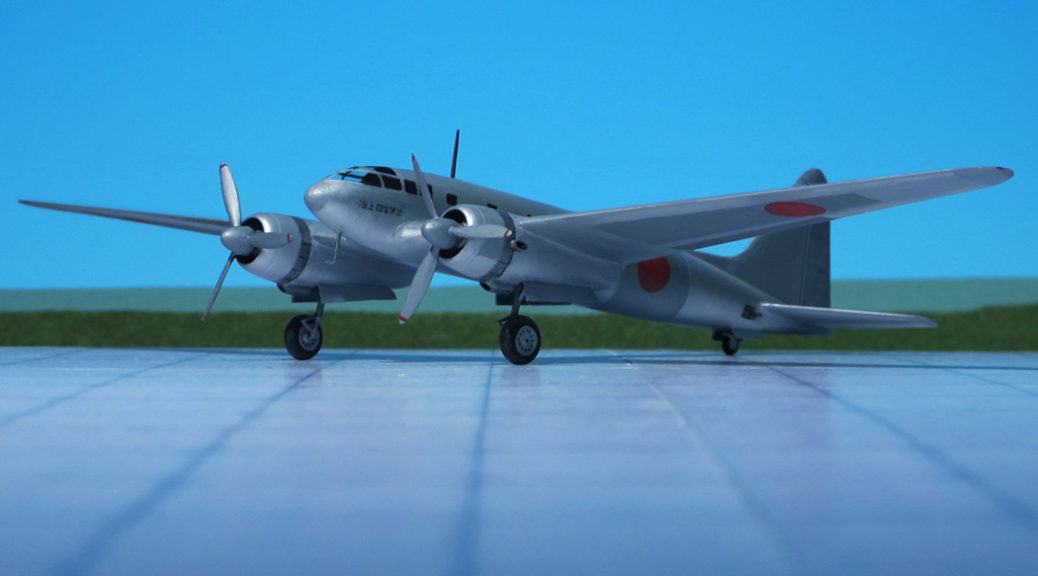TYPE: Long-range Transport and communication aircraft
ACCOMMODATION: Crew of five in sealed oxygen cabin
POWER PLANT: Two Nakajima Ha-115 radial engines, rated at 1,170 hp each
PERFORMANCE: 273 mph at 19,100 ft
COMMENT: The Tachikawa Ki-77 was a Japanese very long-range experimental transport and communications aircraft of World War II derived from a civil design commissioned by the Japanese newspaper “Asahi Shinbun” (“Asahi Press”) to break the flight distance record set by an Italian Savoia-Marchetti S.M.75G.
Ki-77 was the Japanese Army Air Force designation for the civil A-26. The “A” stood for the name of the sponsor Asahi press and “26” for the first two digits of the current Japanese year, 2600 (A. D. 1940).
The overall design was developed by the Aeronautical Research Institute of the University Tokyo together with Tachikawa. It was a clean, slim low wing twin-engine monoplane, and was finalized in autumn of 1940 with the first flight expected in late 1941. But this was canceled with the start of the war against the United States and the reallocation of priorities. The design included a number of novel features, including a high aspect ratio laminar flow wing for reduced drag and a sealed but unpressurized cabin to reduce the need for oxygen masks at its intended operating altitude as well as special low drag cowlings.
In mid 1942, the Japanese decided to forge a link with Europe, but wished to avoid Russian-controlled airspace and development on the Ki-77 was restarted. The first of two prototypes flew on 18 November 1942. The Ki-77 suffered from persistent oil cooling problems which required many changes before being solved, delaying any flight into July 1943. While working on the problem, Tachikawa built a second aircraft that was ready in mid 1943. After several flight trials it was readied for a “Seiko” (Success) mission between Japan and Germany. The aircraft departed Japan on 30 June 1943 for Singapore, where the airstrip had to be lengthened by 1,000 meters to assure a safe take off. Finally, the Ki-77 took off at 7:10 on 7 July 1943 with eight tons of fuel, ample to reach Europe. Their intended destination was a German airfield. The aircraft never reached its destination but disappeared over the Indian Ocean, probably intercepted by British fighters thanks decoding intercepted German communications.
Even if in 1944 the usefulness of record breaking flights was overshadowed by the necessities of war, the Japanese needed a propaganda coup and the surviving Ki-77 was available. On 2 July it flew 19 circuits over a triangular route off Manchuria, landing 57 hours 9 minutes later and covering 10,212 mi at an average speed of 179.1 mph, thus setting a new endurance record. The Ki-77 landed with 800 liters remaining in the tanks of the 3,200 US gal it started with, so the maximum endurance was around 11,000 mi. The Ki-77’s endurance record was never internationally recognized or officiated and was still in existence when Japan surrendered. The aircraft was shipped to the United States aboard the US Navy escort aircraft carrier USS CVE-9 “Bogue” from Yokosuka in December 1945, arriving in the States on January 1946 for examination, before being scrapped (Ref.: 24).













